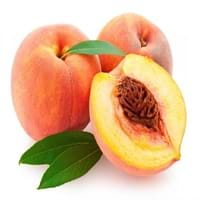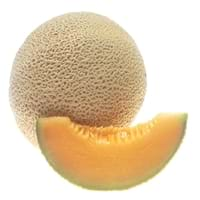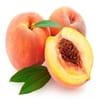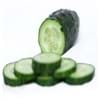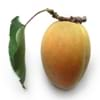Health Benefits
Cancer prevention, Heart care, Improves eye vision, Reduces stress, Regulation of heart rate
Cancer prevention, Heart care, Improves eye vision, Prevents diabetes, Reduces stress
General Benefits
Anti oxidant properties, Eye care
Boosts immune system, Cures cough, Cures fever, Digestive aid, Eye care, Helps in weight loss
Skin Benefits
Heals sunburn, Reduces wrinkles, Treatment of skin diseases
Anti-aging benefits, Hydrates skin, Skin rejuvenation, Treatment of skin diseases
Hair Benefits
Prevents hair loss
Good conditioner, Prevents hair loss, Protects hair
Allergy Symptoms
Abdominal pains, Anaphylaxis, Breathing difficulty, Diarrhea, Dizziness, Hives, Itching, Lightheadedness, Nasal congestion, Nausea, Swelling of mouth, tongue or lips, Tingling sensation in mouth, Vomiting, Wheezing
Abdominal pains, Anaphylaxis, Breathing difficulty, Diarrhea, Dizziness, Hives, Itching of mouth, Nasal congestion, Nausea, Vomiting
Side Effects
Allergic reaction
Allergic reaction, Bloating, Indigestion
Best Time to Eat
As a snack in the late afternoon, Eat the fresh ones, avoid mixing with any other foods, don't eat after meal., Morning time (before lunch)
As a snack in the late afternoon, Don't consume at night and before bed, Eat the fresh ones, avoid mixing with any other foods, don't eat after meal., Morning time (before lunch)
Vitamin B5 (Pantothenic Acid)
Vitamin C (Ascorbic Acid)
Vitamin K (Phyllochinone)
Calories in Fresh Fruit with Peel
Not Available
Calories in Fresh Fruit without Peel
Not Available
Calories in Canned Form
Not Available
Season
Autumn, Summer
Summer
Varieties
Reliance, Sweet Scarlet, Spring Snow, Sugar May, Santa Rosa, Red Beauty, Glowhaven, Cresthaven and Redhaven Peaches
Hales Best Jumbo, Sweet 'N Early Hybrid, Hearts of Gold, Ambrosia, Athena, Honey Bun Hybrid, Fastbreak and Superstar
Color
Pink, Red, White, Yellow, Yellowish-orange
Orange
Inside Color
Yellow
Creamy Orange
Taste
Sweet
Juicy, Musky, Sweet
Origin
China
Africa, India
Soil Type
Sandy loam, Well-drained
Sandy
Climatic Conditions
Cold, Warm
Dry, Hot
Facts about
- In china, peaches are considered as a symbol of good luck.
- From 1982, august is National peach month in USA.
- In roman times, Peaches were also called as Persian apples, as people assumed that they originated from Persia.
- Cantaloupe is known as rock-melon in some parts of the world.
- Christopher columbus first introduced cantaloupes to north america in 1494.
- The name 'Cantaloupe' as it is cultivated in papal gardens of cantaloupes, Italy.
Other Countries
Greece, Italy, Spain, United States of America
Iran, Romania, Turkey, United States of America
Top Importer
Germany
United States of America
Botanical Name
Prunus persica
Cucumis melo var. cantalupensis
Synonym
Not Available
Cucumis melo var. reticulatus
Subkingdom
Tracheobionta
Tracheobionta
Division
Magnoliophyta
Magnoliophyta
Class
Magnoliopsida
Magnoliopsida
Subclass
Rosidae
Dillenhidae
Order
Rosales
Cucurbitales
Family
Rosaceae
Cucurbitaceae
Species
P. persica
C. melo
Difference Between Peach and Cantaloupe
We might think that Peach and Cantaloupe are similar with respect to nutritional value and health benefits. But the nutrient content of both fruits is different. Peach and Cantaloupe Facts such as their taste, shape, color, and size are also distinct. The difference between Peach and Cantaloupe is explained here.
The amount of calories in 100 gm of fresh Peach and Cantaloupe with peel is 39.00 kcal and Not Available and the amount of calories without peel is Not Available and 34.00 kcal respectively. Thus, Peach and Cantaloupe belong to Low Calorie Fruits and Low Calorie Fruits category.These fruits might or might not differ with respect to their scientific classification. The order of Peach and Cantaloupe is Rosales and Cucurbitales respectively. Peach belongs to Rosaceae family and Cantaloupe belongs to Cucurbitaceae family. Peach belongs to Prunus genus of P. persica species and Cantaloupe belongs to Cucumis genus of C. melo species. Beings plants, both fruits belong to Plantae Kingdom.
